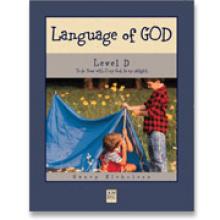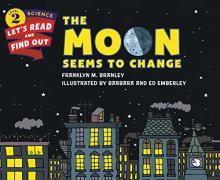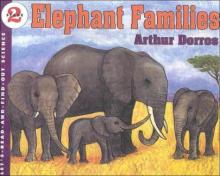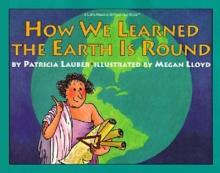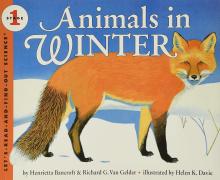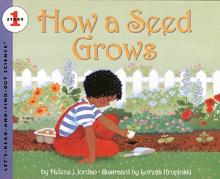No name
Language of God for Little Folks (Level D)
Designed for 4th or 5th grade, this level of the popular Catholic grammar curriculum is another winner! The book has been improved from the earliest editions of the lower levels by using a high-quality, bright-white, erasable paper with a lay-flat spiral binding. The 120 exercises in the worktext provide four short lessons per week for thirty weeks, including regular review of concepts already taught on lessons titled "Practice". There are no tests, although the "Practice" pages could be used as tests. The examples and exercises are gently Catholic, using bits of Catholic history, explanations of Catholic customs, and illustrations from daily family life as the sentences upon which the students practice. Pictures are simple black-and-white drawings and sketches and add to the simplicity of the book. It is very refreshing to use a text that is not filled with politically correct rhetoric and visually overwhelming photos and diagrams!
This level reviews grammar topics covered in earlier grades and extends these topics with grade-level information. A study of the parts of speech and their usage comprises the majority of the lessons. An introduction to traditional sentence diagramming (7 lessons) and sentence construction is also included (about 10 lessons). The exercises require very little actual pen-and-paper work and are ideal for a child who struggles with the physical act of writing. To practice a child's handwriting and to improve his retention, I have my children copy some of the daily practice sentences into their grammar notebooks, rather than just filling-in-the-blanks. For a student of this age, this text is not a complete language arts curriculum; you will also need regular composition exercises.
Copyrights 2001/2005
Language of God Level E
The Big Dipper
A very simple science book for children with cartoon-like pictures (nice cartoon, not cheezy-cartoon) that introduces some basic concepts about the stars. The very simple story line discusses looking at the night sky, that you see different stars in the summer and winter, where the big dipper got it's name, the names of the stars that make up the big dipper, how people can find direction from the North Star and the traditional constellation Ursa Major that the Big Dipper belongs to. The language is very simple, but not at all dumbed down - especially appropriate for preschool.
The Moon Seems to Change
This book, through simple illustrations and very readable text, gives young children (approximately Kindergarten thru third grade) an excellent explanation of the moon and the changes we can easily observe in it during a month. What often seem like complex concepts - the phases of the moon and its movement relative to the earth - are made very understandable through the text and a very simple experiment involving an orange stuck onto a pencil (a styrofoam ball stuck onto a chopstick worked quite well for us with less mess) and a flashlight. Naturally, it's recommended to do some real observations along with the book.
Many editions, 1960 onwards.
What Makes a Magnet?
What Makes a Magnet? constitutes a fairly substantial introduction to magnets for children approximately ages 5 to 9. They are invited to do a little discovery for themselves by doing some "fishing" with a magnet in a box of miscellaneous objects and see what things the magnet will pick up. The book goes on to explain that magnets pick up, not everything made of metal, but objects which contain iron in particular. Also explained are how to make your own magnet and compass, the poles of magnets and the earth, and the history of the discovery of the first magnets (lodestones) and how they were used for early navigation. This is a very nice early science book (despite a few "corny" pictures) because of the rich content in a simple format and how the book actively involves the child in the learning process.
Elephant Families
This book focuses on elephant's care for and interaction with each other with a significant emphasis on elephants being killed by poachers.
Unlike the interesting scientific information designed to impart facts and help children develop an interest in science (as I've come to expect from the Let's Read-and-Find-Out Science Series) this book gets lost in the mediocrity of environmentalism by giving children a sort of emotional attachment to elephants (by over-emphasizing their slight similarities with people) and shocking them with details about how and why people kill elephants and a somewhat gruesome (relative to the age-level) picture of a truck filled with blood-stained elephant tusks. Rather disappointing altogether.
How We Learned the Earth is Round
A history and science picture book that covers the development of man's understanding of the shape of the earth focusing on the discoveries of the Greeks and on the voyages of Christopher Columbus and Magellan. Currently out-of-print.
Animals in Winter
A beautifully illustrated look at where various animals go when it snows and how they prepare for winter. We learn details of the migration of various animals (such as birds, butterflies and bats), animals that hibernate, animals that store up food for the winter and animals that have to find their food throughout the winter. Includes instructions for feeding birds and other wild animals in your own backyard.
How a Seed Grows
A very simple, charming book that explains to young children what seeds are and takes them through the development of some bean seeds. The growth present each day is illustrated in the book and the child is invited to try grow the beans themselves and watch the progress in real life. The book also introduces children to different kinds of seeds (for trees, flowers, vegetables, etc.), and how each seed will grow into the same kind of plant that it came from, and the basic things necessary to make a plant grow.

